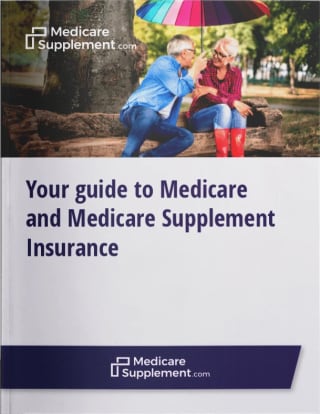Learn about their current healthcare insurance
Whether they are already using some form of Medicare or they are moving from an employer-sponsored plan when they retire, your loved one probably has some things that they like about their current plan and some things they wish they could improve. Sit down with them and ask them questions about what they like, what services they use most and what they are paying for that they don’t necessarily need. This will help you make a determination about how much coverage they are interested in paying for when they do select a Medigap plan.
Create a list of doctors, medications and any medical equipment that your loved one relies on
Becoming familiar with the amount of medical care and medications your loved one requires will be an important part of helping them evaluate their various coverage options. When consulting with a licensed insurance agent, always make sure they are aware of your provider preferences, necessary medications and other healthcare information.
Determine how often they intend to travel outside the country
One benefit of Medigap is that certain plan types may cover up to 80% of emergency care that is received outside of the US. If your loved one is planning on traveling out of country regularly, this may be a good plan component to pay attention to and discuss with your loved one. The foreign emergency care benefit typically includes a separate deductible, coinsurance, and lifetime limit.
Make sure to submit an “Authorization to Disclose Personal Health Information” form
On occasion, you may need to contact Medicare on behalf of your loved one. To do this, they must grant you permission via the “Authorization to Disclose Personal Health Information” form that you submit in the mail. You can find that form here.
Have an honest discussion about cost vs. peace of mind
The great news about Medigap is that there are several coverage options available for people with different needs. Making a plan selection can become easier when you work with your loved one to prioritize what’s most important to them and take the state of their health, lifestyle and budget into consideration.
It’s also important to pay attention to the entire amount of monthly payments your loved one will be making each month. How much can they afford? Is a lower monthly cost more important than potentially costly unanticipated out-of-pocket costs? Discussing these questions should help you gain valuable perspective as to what combination of plans will satisfy the most important aspects of their healthcare wish list.
Get well-acquainted with their “guaranteed issue rights”
The best time to enroll in a Medigap policy is during the 6-month open enrollment period that begins when a beneficiary is both 65 years old and enrolled in Medicare Part B. If your parent has health concerns, a Medigap carrier may not use medical underwriting if they apply during this period. That means they cannot charge them higher premiums or deny their application due to their health.
Per federal law, insurance companies are required to offer certain Medigap policies and are sometimes referred to as “Medigap protections.” Medicare.gov defines these situations as:
- An insurer is required to sell your loved one Medigap policy,
- They must cover all health conditions, including any pre-existing,
- The carrier may not increase charges based on any health problems in the past or present.
Understanding these guaranteed rights are important when considering Medigap after a current Medicare plan changes or coverage is lost. You can learn more about other scenarios where these rights will become important for your loved one here. Some states may have additional Medigap protections. Check with your state’s department of insurance to learn more.
Is a Medigap plan right for your loved one?
It’s possible! People that travel often, who want to be able to have flexibility in their choice of doctors and/or people who want to invest in insurance that will provide greater coverage if they become seriously ill or injured may find Medigap plans to be extremely beneficial. A Medigap plan in conjunction with Original Medicare Parts A and B, and a Prescription Drug Plan may be an attractive combination of coverage options for some people.
What’s next?
After you and your loved one are able to map out the answers to these questions, you may be clear on what they need but you’ll probably still have some questions. Speaking with a licensed insurance agent can be a good way to understand options and ask any additional questions you may have.
Connect with a licensed insurance agent to learn more about Medigap options in your area.
Find a plan



